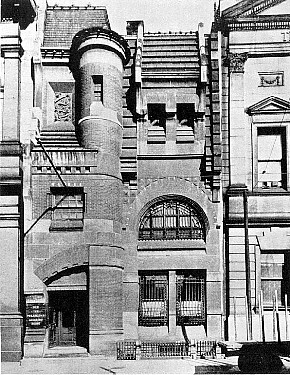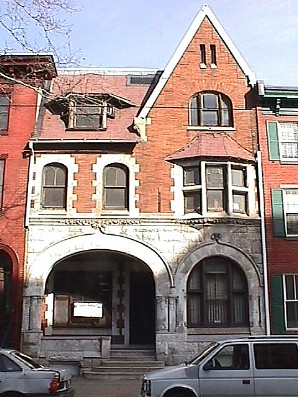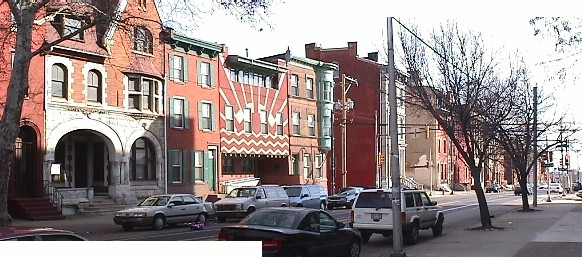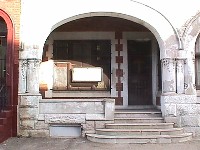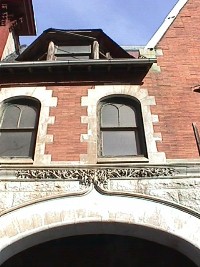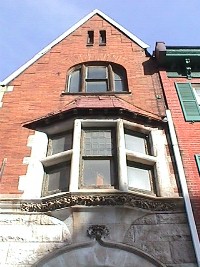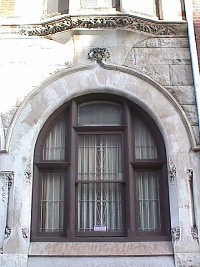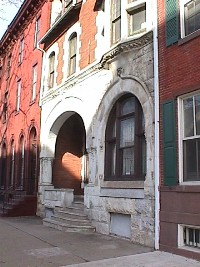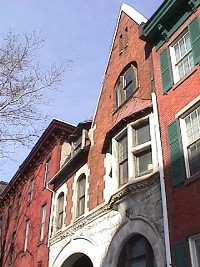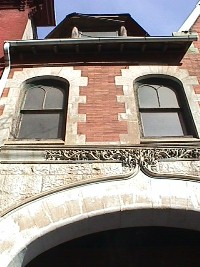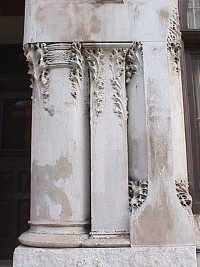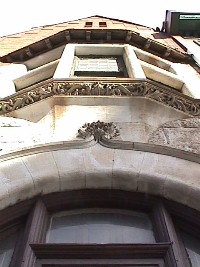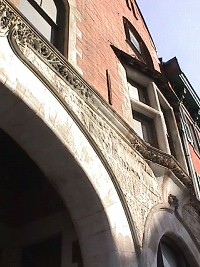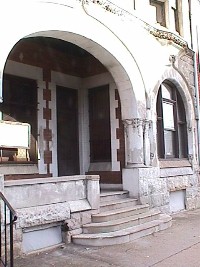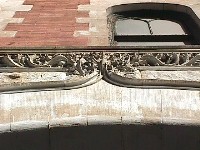The Philadelphia School, deterritorialized | mélange |
circa 1885 |
| House on Girard Avenue |
|
|
The reasons Robert Venturi likes Mount Sharon Baptist Church as much as he does are very likely the same reasons he likes the former National Bank of the Republic by Frank Furness. In Complexity and Contradiction in Architecture Venturi wrote:
|
|
Today known as Mount Sharon Baptist Church, the former house on the north side of the 1600 block of West Girard Avenue is probably just over 100 years old, and the name of its architect is not exactly common knowledge among Philadelphia architects and architectural historians. Robert Venturi said George Thomas thought the building might be by Wilson Eyre, but even Venturi did not know the architect for sure, at least not in the middle of summer 2001. The house, now church, raising these questions sits on a still cohesive block of Girard Avenue that is among other Girard Avenue blocks that contain many empty lots and more abandoned buildings than not. On the south side of the 1600 block of West Girard Avenue is St. Joseph's Hospital, and the anchoring effect of this large building/institution is probably why the smaller buildings across the street are still relatively unchanged.
|
2001.07.17 14:01 |
|
|
www.quondam.com/40/4010i.htm | Quondam © 2018.02.10 |
